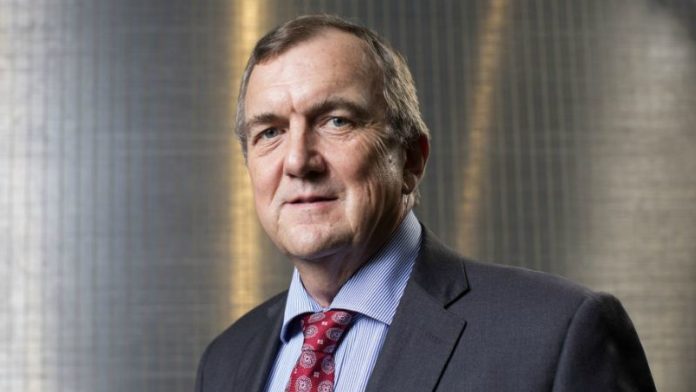
THE Democratic Republic of Congo (DRC) has approved the payment of about $500m in joint venture cash to Barrick Gold and its partner, AngloGold Ashanti, earned from the central African country’s Kibali gold mine.
“It’s just the paper work,” said Barrick Gold CEO, Mark Bristow, during question time following the presentation of the firm’s second quarter and interim results in which the Canadian headquartered firm unveiled a 14% increase in the dividend.
In terms of an agreement with the DRC, 60% of revenue earned from the Kibali mine has to be repatriated to the central African country for economic development purposes, internal dividends, and to pay creditors. The balance of the revenue is paid into a joint venture offshore account to pay creditors and to meet other obligations.
The joint venture partners are, however, allowed to extract any excess revenue from the DRC. However, this requires the approval of the DRC authorities. As that approval has been slow coming, the monies have built up over time and were estimated to be $500m at the close of the last quarter.
“Discussions with the government is going extremely well. We have approval from the central bank to repatriate the money. We are also working with the Parliament to tidy up the legislation,” said Bristow today. “There is no question it [the money] belongs to Barrick and, of course, AngloGold.”
Bristow said in comments to the group’s numbers that forecast production of at least 500,000 ounces a year for 10 years would be derived from the firm’s resuscitated Tanzania mines – Bulyanhulu and North Mara – at a cost of production that would place them among the Canadian group’s tier one mines.
Bristow added that the relationship with Tanzanian government had been restored following the “destruction” wrought by the former owner of the mines, Acacia Resources.
Tanzania president, John Magafuli, suspended Acacia’s gold-in-concentrate exports amid claims the former UK-listed group had failed to pay tax for 20 years. After the merger of Randgold Resources and Barrick – the latter owning about 64% of Acacia – the mines were consolidated into the merged group.
“The foundation has been laid for delivery and I can see North Mara and Bulyanhulu together eventually ranking at a tier one complex with annual production in excess of 500,000 ounces at a cost in the lower half of the industry curve, well beyond 10 years,” said Bristow.
The resumption of mining at Bulyanhulu is expected by year-end after work on the structural integrity of the metallurgical plant had been completed. The refurbishment of the main shaft is scheduled to start this month.
DIVIDEND LIFT
Barrick said it would pay a second quarter dividend of $0.08 per share – more than double the dividend announced at the time of the merger in 2018.
This was on the back of steady gold production for the six months to end-June of 2.4 million oz, at the mid-point of Barrick’s 4.6 million to 5 million oz annual guidance, as well as a higher gold price of $1,725/oz compared to $1,589/oz in the first quarter and $1,317/oz in the first quarter of the 2019 financial year.
Operating cash flow exceeded $1bn for the quarter and free cash flow was $522m, said Barrick. Net earnings per share was 20 cents. Adjusted net earnings per share was 23 cents, up 44% from the first quarter. Net debt net was reduced by almost 25% to $1.4bn from the end of the first quarter.
GOLD PRICE
Bristow said that the increase in the dollar price of gold could allow the company to extend the life of the Tongon mine in Ivory Coast. “We are considering a plan to trade a lower gold production for a longer life of mine,” he said.
The outcome would be to extend Tongon’s life to 2024 from 2022 at production of 180,000 oz per year. There was potential to extend the mine yet further although Bristow added the company continued to plan on a gold price of $1,200/oz. Gold is currently trading at around $2029/oz after breaching $2,000/oz last week.
In respect of merger and acquisition activity, Bristow said the company remained interested in potential deals, but “… we won’t do it on the back of a bigger gold price. We ignore the revenue side of our business when it comes to M&A”.
There would be more non-core asset sales. Having sold Barrick’s share in Kalgoorlie mine in Australia and Massawa, a mine in Senegal, there were “… smaller assets that look very attractive at the current gold price. You can look forward to more deals,” he said.
Barrick had already met its $1.5bn disposal target it had set out following the merger with Randgold Resources in 2018.











